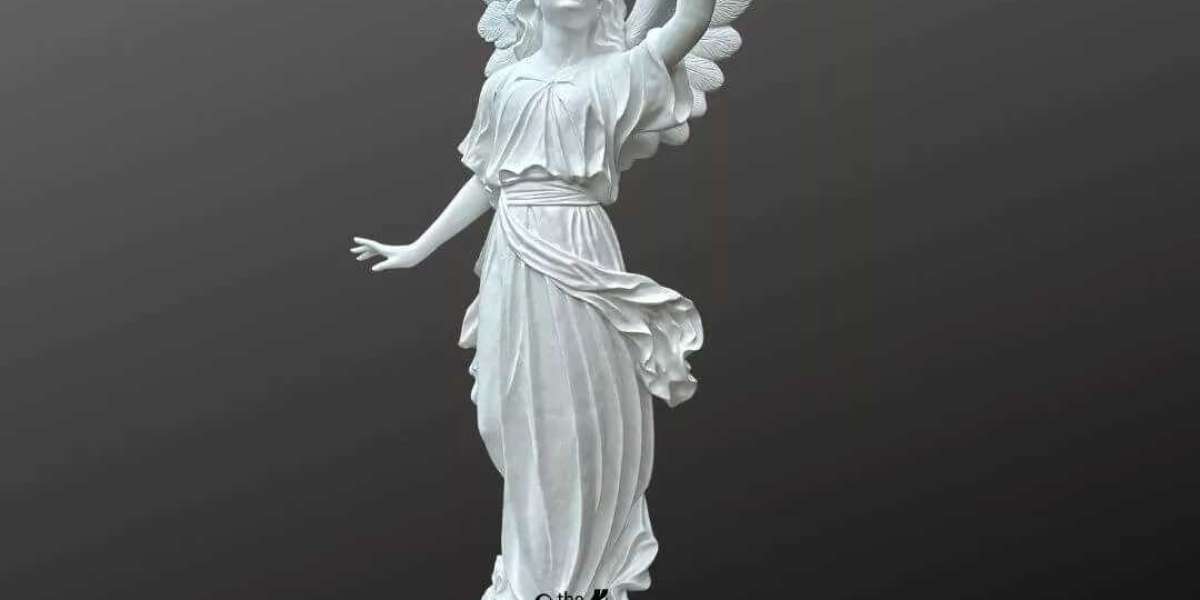Cemeteries are more than resting places for the deceased—they are landscapes of memory, expressions of grief, and often, open-air museums of artistic and architectural achievement. Among the most poignant and powerful symbols found in cemeteries around the world is the angel statue. Standing silently over graves and mausoleums, these celestial figures offer comfort, beauty, and a sense of spiritual continuity. But what do these statues mean? Where did they come from, and how have they shaped the art and architecture of memorial culture? In this blog, we explore the fascinating role of angel statues in cemetery art and memorial architecture, tracing their evolution, symbolism, and enduring appeal.
The Origins of Angel Imagery in Funerary Art
The use of angelic imagery in funerary contexts dates back to ancient times, long before the modern angel statue emerged. In early Christian art, angels were often depicted as messengers or guardians, mediating between heaven and earth. Over the centuries, this role expanded to encompass guiding the souls of the dead, protecting the living, and standing as symbols of divine presence.
In the Middle Ages, angelic imagery became increasingly popular in cathedrals, churches, and tombs. The Renaissance further advanced the artistic representation of angels, introducing idealized forms, graceful poses, and emotional depth. By the Victorian era, when attitudes toward death and mourning became more sentimental and elaborate, the angel statue rose to prominence in cemetery art.
Symbolism of Angel Statues in Cemeteries
Each angel statue carries layers of meaning, often tailored to reflect the beliefs and emotions of the bereaved. While no two statues are exactly alike, many share common symbolic themes:
1. Guardian Angels
Perhaps the most recognizable role of an angel in funerary art is that of a guardian. These angels are often depicted with wings outspread, as if to shield the grave from harm. In this form, the angel statue becomes a protector of the soul, watching over the departed in their eternal rest.
2. Angels of Grief and Mourning
Some angel statues show figures weeping or with bowed heads, expressing sorrow and loss. These statues resonate deeply with mourners, as they mirror human emotions. The "Angel of Grief," created by sculptor William Wetmore Story in 1894 for his wife’s tomb, is one of the most famous examples. This poignant statue has since inspired countless reproductions around the world.
3. Trumpeting Angels
Often associated with resurrection and the Last Judgment, trumpeting angels symbolize the hope of eternal life. A trumpeting angel statue typically represents the belief that the dead will rise again and be reunited with loved ones.
4. Praying Angels
Statues of praying angels suggest intercession, peace, and the presence of divine grace. Their upward gaze and clasped hands communicate a connection between earth and heaven, encouraging reflection and spiritual contemplation.
5. Child Angels or Cherubs
These are often found on the graves of children, symbolizing innocence, purity, and the belief that the young deceased have returned to the heavenly realm. Though smaller in size, these statues carry immense emotional weight.
The Angel Statue as an Artistic Masterpiece
Beyond symbolism, angel statues often serve as intricate works of art, showcasing the skill of the sculptor and the stylistic trends of their time. From the neoclassical grace of 19th-century cemetery angels to the more abstract or modern interpretations found today, each angel statue reveals something about the era in which it was created.
Artists and architects have long been fascinated by the challenge of capturing ethereal beauty in solid stone. Marble, limestone, and granite are common materials used to carve angelic forms. The attention to detail—feathers in wings, flowing robes, expressive faces—demonstrates the blend of technical skill and spiritual sensitivity that defines great funerary art.
Notably, many angel statues were commissioned from renowned sculptors or imported from Europe, particularly during the 19th and early 20th centuries, when affluent families sought elaborate and personalized memorials.
Regional Variations and Cultural Influences
Though angel statues are most commonly associated with Christian cemeteries, their design and interpretation can vary widely across cultures and regions.
United States and Western Europe
In the U.S. and Western Europe, Victorian cemeteries are often filled with angelic figures. These reflect not only religious belief but also a growing romanticism surrounding death. Garden cemeteries like Père Lachaise in Paris or Green-Wood in Brooklyn are celebrated for their vast collections of funerary sculpture, including angel statues of remarkable beauty.
Latin America
In countries like Mexico, angel statues are often blended with local traditions and Day of the Dead imagery. The result is a fusion of Catholic symbolism and indigenous beliefs, where angels can represent ancestral spirits as much as Christian figures.
Eastern Europe
Here, the angel statue sometimes adopts a more somber, melancholic tone, reflecting the historical experiences of war and political upheaval. These statues may appear weathered or subdued, yet they remain powerful symbols of endurance and remembrance.
Modern Interpretations and the Continued Allure of Angel Statues
While many contemporary cemeteries favor simpler, more minimalistic gravestones, the angel statue continues to captivate. Today, modern memorial parks may incorporate stylized or even abstract angel forms that harmonize with landscaped settings. Advances in materials—such as bronze casting, resin molds, and even 3D printing—allow for new interpretations of this timeless figure.
Moreover, angel statues are increasingly found outside traditional cemeteries, gracing memorial gardens, private homes, and even digital spaces. Online memorial platforms sometimes use angel imagery to symbolize remembrance in virtual environments.
The enduring popularity of the angel statue suggests that, even in a rapidly changing world, the need for spiritual symbolism and artistic expression in mourning remains strong.
The Psychological and Emotional Impact of Angel Statues
For many people, angel statues offer emotional solace. They create a tangible representation of the intangible—the soul, the afterlife, the divine. Their presence in a cemetery can transform a place of sorrow into one of serenity, offering visual reminders of love, hope, and the possibility of reunion.
Walking among angel statues, visitors often report a sense of peace. The gentle expressions, flowing lines, and soft contours of these figures can evoke a calming atmosphere, encouraging introspection and healing. In this way, the angel statue acts not only as a memorial but also as a medium for emotional and spiritual connection.
Preserving and Restoring Cemetery Angel Statues
With time, many angel statues have suffered from weathering, pollution, and neglect. Preservation efforts are vital to maintaining the historical and artistic legacy these sculptures represent. Organizations dedicated to cemetery preservation often work to clean, repair, and protect angel statues, using both traditional techniques and modern conservation methods.
Community involvement also plays a role. Volunteers, historians, and artists frequently collaborate on restoration projects, breathing new life into aging monuments. By preserving these statues, we safeguard the stories and sentiments of generations past.
Conclusion: A Timeless Emblem of Memory and Meaning
From their symbolic depth to their artistic splendor, angel statues occupy a special place in the world of cemetery art and memorial architecture. They transcend time and culture, offering messages of comfort, guardianship, and divine connection. Whether ancient or modern, elaborate or simple, these stone angels continue to watch over the resting places of the departed, reminding us that love and memory are eternal.
In a world where digital screens and fleeting trends dominate much of daily life, the quiet presence of an angel statue in a cemetery stands as a testament to our enduring need for beauty, meaning, and the sacred. Their wings may be made of stone, but their message takes flight in the hearts of all who encounter them.



